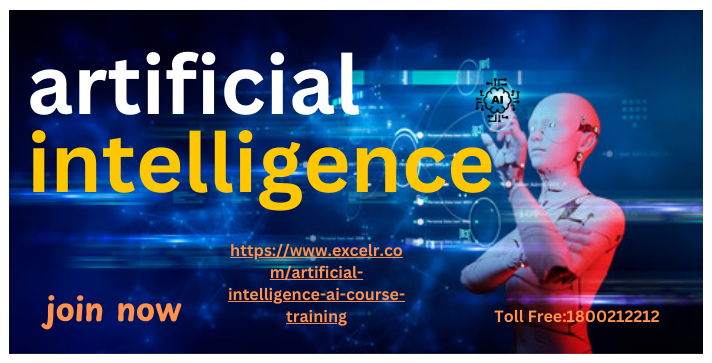Unleashing the Potential of Deep Learning in Artificial Intelligence
 excelrsolution
excelrsolution
Unleashing the Potential of Deep Learning in Artificial Intelligence
Deep learning is a groundbreaking subset of artificial intelligence (AI) that has revolutionized the way machines process data and make decisions. It has become a key driver behind many of the technological advancements we see today, from voice recognition systems to autonomous vehicles. By mimicking the way the human brain processes information, deep learning has unlocked new possibilities in AI, enabling machines to perform tasks that were once thought to be exclusive to humans. This article delves into how deep learning uses AI to transform various industries and what makes it such a powerful tool.
Understanding Deep Learning
At its core, deep learning is a type of machine learning that utilizes artificial neural networks with many layers—hence the term "deep." These networks are designed to imitate the way the human brain works, processing vast amounts of data through layers of interconnected nodes, or "neurons." Each layer in the network extracts increasingly complex features from the input data, allowing the system to understand and interpret information in a way that traditional algorithms cannot.
For example, in image recognition, the first layer of the neural network might identify basic features like edges and shapes. Subsequent layers would then combine these features to recognize more complex patterns, such as objects or faces. This hierarchical processing allows deep learning models to excel at tasks such as image classification, speech recognition, and natural language processing.
The Role of Artificial Intelligence in Deep Learning
Artificial intelligence (AI) serves as the foundational framework that deep learning builds upon. AI encompasses a wide array of technologies designed to enable machines to perform tasks that typically require human intelligence, such as reasoning, learning, and problem-solving. Within this expansive field, deep learning has emerged as a standout due to its unique ability to autonomously learn from vast amounts of data without needing explicit instructions for each specific task.
In traditional AI systems, programmers develop detailed algorithms that dictate how a machine should approach and solve a particular problem. In contrast, deep learning takes a more dynamic approach. Rather than relying on pre-programmed instructions, deep learning models learn by analyzing large datasets, identifying patterns, and making decisions based on the information they have processed. This self-learning capability is what makes deep learning such a powerful and versatile component of AI, allowing it to tackle complex tasks with greater efficiency and accuracy than traditional methods.
Applications of Deep Learning in AI
Deep learning has found applications in a wide array of fields, significantly enhancing the capabilities of AI systems. Some of the most prominent areas where deep learning is making an impact include:
1. Computer Vision
Deep learning has transformed the field of computer vision, allowing machines to process and understand visual information with exceptional precision. This technology powers a wide range of applications, from facial recognition in security systems to automatic image tagging on social media. In the healthcare sector, deep learning models are utilized to analyze medical images, playing a crucial role in the early detection of diseases like cancer.
2. Natural Language Processing (NLP)
Natural language processing is another area where deep learning shines. AI-powered chatbots, virtual assistants, and translation services rely on deep learning to understand and generate human language. These systems have become increasingly sophisticated, capable of not only recognizing speech but also understanding context, sentiment, and intent.
3. Autonomous Vehicles
Deep learning is at the heart of autonomous vehicle development, enabling self-driving cars to navigate complex environments with precision. These vehicles rely on deep learning models to interpret data from cameras, radar, and various sensors, allowing them to understand their surroundings, identify obstacles, and make quick, informed decisions. This advanced processing capability is essential for ensuring the safe and efficient operation of autonomous vehicles.
4. Healthcare
In healthcare, deep learning is being used to develop personalized treatment plans, predict patient outcomes, and accelerate drug discovery. For instance, deep learning models can analyze patient data to identify potential health risks and recommend preventive measures. This application of AI has the potential to transform how healthcare is delivered, making it more proactive and tailored to individual needs.
Challenges and Future Directions
Despite its impressive capabilities, deep learning is not without its challenges. One of the primary issues is the need for large amounts of labeled data to train models effectively. Additionally, deep learning models are often considered "black boxes" because they make decisions in ways that are difficult to interpret. This lack of transparency can be problematic in fields where understanding the rationale behind a decision is crucial, such as in healthcare or legal applications.
Looking ahead, researchers are working on developing more explainable AI models that maintain the accuracy of deep learning while providing greater insight into how decisions are made. There is also a growing interest in making deep learning models more efficient, reducing their computational requirements so they can be deployed in resource-constrained environments like mobile devices.
Conclusion
Deep learning has emerged as a transformative force within artificial intelligence, driving advancements across numerous industries. By harnessing the power of neural networks, deep learning enables machines to perform tasks with a level of accuracy and sophistication that was previously unattainable. As the field of AI continues to evolve, deep learning will undoubtedly play a central role in shaping the future, opening up new possibilities for innovation and discovery.
Subscribe to my newsletter
Read articles from excelrsolution directly inside your inbox. Subscribe to the newsletter, and don't miss out.
Written by
